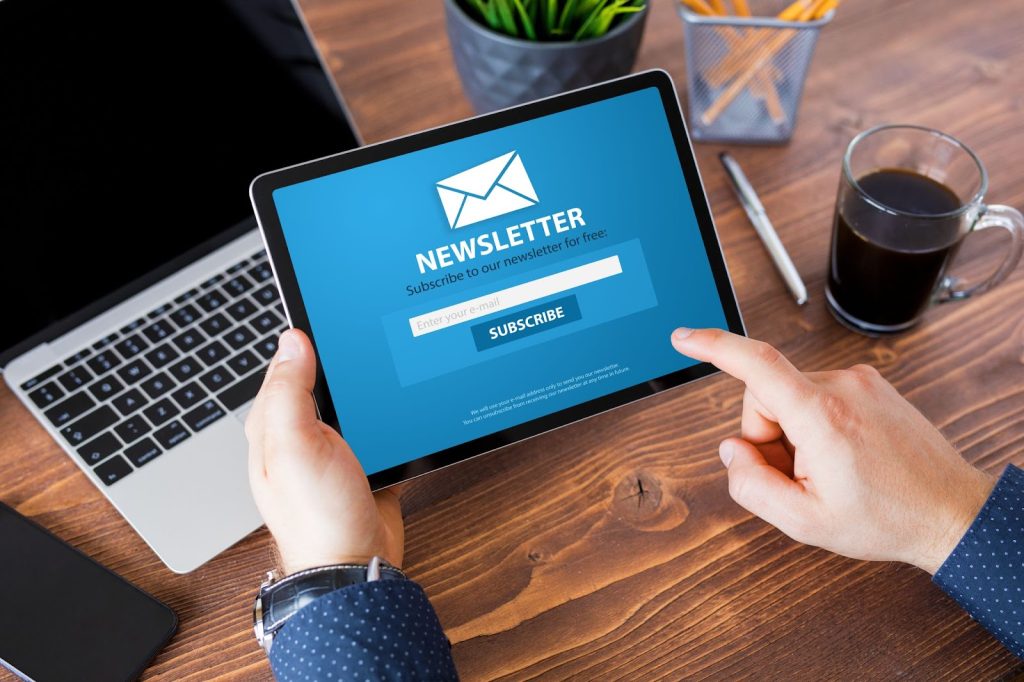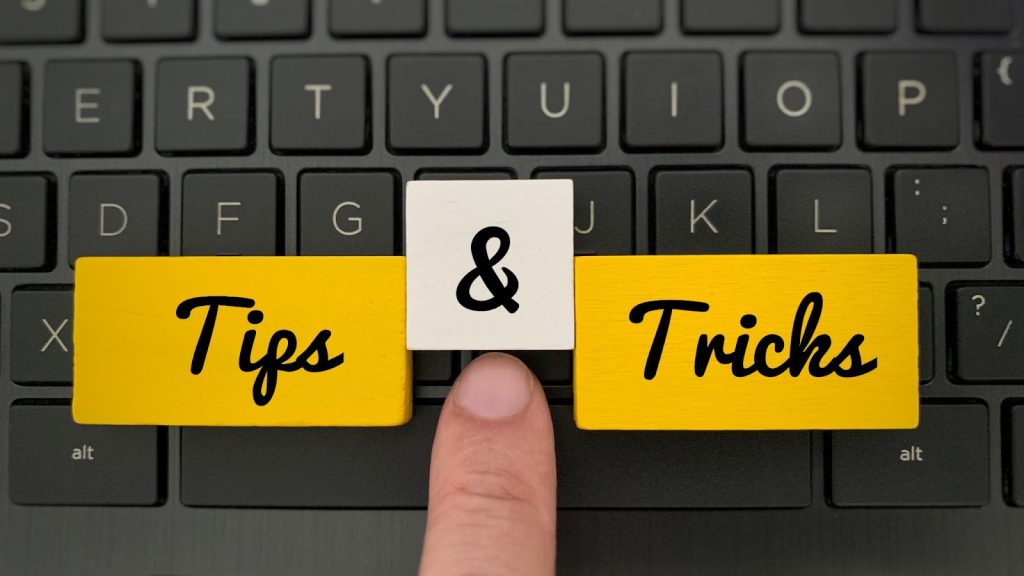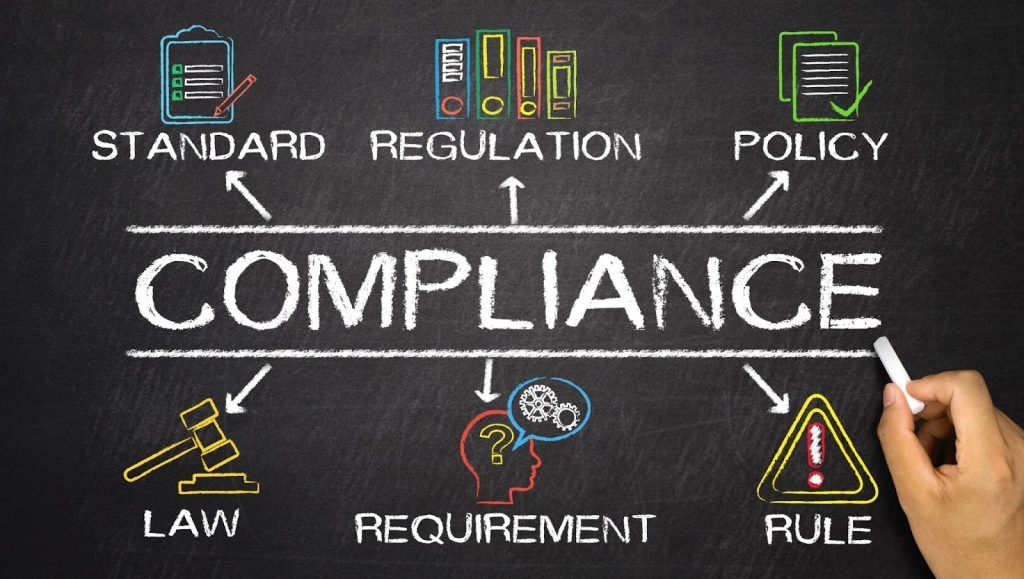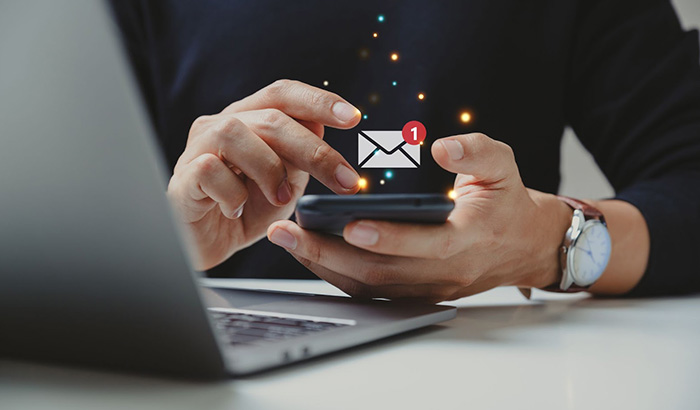Email newsletters are crucial for connecting directly with customers and building lasting relationships in today’s digital landscape. Crafting the perfect newsletter is more than regular emails; it requires understanding their distinct types and strategic uses.
In this blog, we’re delving into how to effectively use newsletters to engage your audience, whether you aim to drive sales, share knowledge, or keep your brand top-of-mind. Join us as we explore the essentials of successful email marketing through impactful newsletters and how an email marketing agency can help.
Basics of email newsletters
Email newsletters are regular electronic publications sent directly to subscribers’ email accounts. They are a powerful way for businesses, charities, blogs, and other platforms to engage with their audience, providing valuable information, updates, promotions, and more.
This personalized means of communication helps establish meaningful connections between brands and their followers.
Types of email newsletters
Let’s take a look at the different types of newsletters.
Promotional newsletters
Promotional newsletters are primarily sales-driven and inform subscribers about new products, services, or special offers. The content is often vibrant and enticing, designed to stimulate immediate action, such as purchasing or taking advantage of a limited-time deal.
These newsletters typically include strong calls-to-action (CTA) and eye-catching visuals to draw attention to the promotions. They are particularly effective during the holiday season or when launching new product lines, helping to boost sales and increase customer engagement.
Educational newsletters
Educational newsletters aim to provide valuable information or teach readers something new, helping to establish the sender as an authority in their field. This type can include tips, how-to guides, tutorials, or industry insights.
The primary goal is not directly to sell but to add value to the recipient’s life or business, fostering loyalty and trust. Educational newsletters are ideal for companies looking to build long-term customer relationships and position themselves as thought leaders.
Curated content newsletters
Curated content newsletters involve gathering and sharing content from various sources that the audience may find interesting or valuable. This could include articles, videos, podcasts, and more that are relevant to the subscriber’s interests but not necessarily created by the newsletter sender.
These newsletters save recipients time by making content discoveries for them and help enhance a brand’s reputation for being in the know. They are handy for organizations that want to keep their audience informed about industry trends without the necessity of constantly producing new, original content.
Company updates
Company update newsletters keep subscribers informed about what’s new with the company. This includes behind-the-scenes stories, new hires, company achievements, or updates on future plans and directions.
They are crucial for maintaining transparent relationships with customers and stakeholders, making them feel like they are part of the company’s journey. These newsletters help humanize the brand, strengthen community ties, and inform loyal customers about their favorite company’s evolution.

How to subscribe to email newsletters
Website sign-up
Many newsletters offer a simple sign-up form on their websites where users are ab;e tp enter their email addresses and opt-in to receive updates. Look for prominent “Subscribe” or “Stay Informed” buttons.
Social media platforms
Brands often promote their newsletters on social media, allowing users to sign up directly from their profiles or posts. Look for these opportunities on your favorite platforms!
Designing your newsletter
When it comes to effective email communication, a well-designed newsletter makes all the difference. Whether you are sending newsletters for personal or professional purposes, designing them in an attractive and organized manner helps ensure your message is read and understood.
Layout and formatting
The first step in designing your newsletter is selecting a layout that suits your content and purpose. A grid-like layout with multiple columns is often preferred as it allows for a balanced distribution of text and visuals.
By dividing your newsletter into sections, you can present information in a structured and organized manner, making it easier for readers to navigate and comprehend.
When it comes to formatting, simplicity is key. Choose a font that is easy to read, even for younger readers. Sans-serif fonts like Arial or Verdana are often recommended for their clean and straightforward appearance.
Use headings and subheadings to break up your content and make it more scannable. Avoid using excessive capitalization or bolding, which can make the text harder to read.
Eye-catching visuals
Incorporating visuals into your newsletter will significantly enhance its appeal and capture readers’ attention. Images, illustrations, and even simple icons help break up text-heavy sections and make your newsletter more visually engaging. When choosing visuals, ensure they are relevant to your content and complement your message.
Remember that high-quality visuals are necessary to maintain a professional appearance. Avoid using low-resolution or pixelated images, as they will give your newsletter a negative impression.
If you cannot create your visuals, many websites offer copyright-free images, making it easy to source appealing visuals for your newsletter.
Color and contrast
The effective use of color and contrast significantly impacts your newsletter’s overall look and readability. Select a color scheme that aligns with your brand or the purpose of your newsletter. Consider using complementary colors that work well together, or stick to a more monochromatic palette for a clean and elegant look.
When it comes to contrast, make sure your text is easily distinguishable from the background. Dark text on a light background is generally the easiest to read. Avoid using bright or neon colors for your text, as they may strain readers’ eyes or make the content difficult to read.
Call-to-action
Including a clear and compelling call to action in your newsletter is essential to encouraging reader engagement. Whether you want your readers to click on a link, reply to the email, or take any desired action, highlight it prominently. Use buttons or hyperlinked text with contrasting colors to draw attention to your call to action.
Additionally, consider the placement of your call to action within your newsletter. It should be easily noticeable and ideally positioned above the fold, which refers to the visible area of the newsletter without the need to scroll. By strategically placing your call to action, you increase the likelihood of readers taking the desired action.

Building your email list
In today’s digital age, email newsletters have become a powerful tool for businesses and individuals alike. They allow you to establish a direct and personal connection with your audience, informing them about your latest products, services, and updates. However, you must build a strong email list before you can start sending out those newsletters.
Building an email list may seem daunting, but it is essential in expanding your reach and nurturing your relationship with your audience. Here’s why it matters:
1. Direct communication: Unlike social media platforms or search engines, email newsletters offer a direct line of communication with your subscribers. By landing right in their inbox, you have a higher chance of capturing their attention and engaging them with your content.
2. Targeted marketing: With an email list, you have gathered a group of people who have willingly shown interest in your offerings. This allows you to personalize your marketing messages to suit their specific needs and preferences, increasing the chances of conversions.
3. Increased website traffic: When sending newsletters, include links to your website or blog. By enticing your subscribers with valuable content and driving them to your site, you’ll boost your traffic and improve your visibility in search engine results.
Effective strategies for building your email list
Now that we understand the importance of building an email list let’s dive into some effective strategies that will help you grow it:
1. Create Compelling Opt-In Offers: Offer your website visitors a valuable resource such as an ebook, guide, or exclusive content in exchange for their email addresses. Make sure your opt-in forms are prominently displayed and easy to fill out.
2. Leverage Social Media: Promote your email newsletter on your social media platforms by sharing snippets of your content and encouraging your followers to sign up. You can also run targeted ads specifically aimed at growing your email list.
3. Guest Blogging: Write guest posts for other popular blogs in your industry and include a call-to-action at the end, inviting readers to join your email list for more valuable content.
4. Use Pop-Up Forms: While some may find them annoying, pop-up forms are effective in capturing your visitors’ attention and encouraging them to subscribe. However, be sure they are not disruptive and offer something of value.
5. Host Webinars or Events: Organize webinars or live events where attendees must register with their email addresses. This will build your email list and establish you as an expert in your field.
6. Cross-Promotion: Partner with other businesses or influencers in your niche and offer to promote each other’s newsletters to your respective audiences. This could significantly accelerate your email list growth.
7. Make Sign-up Easy: Optimize your sign-up process by keeping it simple and straightforward. Only ask for essential information like name and email address, and assure your audience that you will protect their data.
Nurturing your email list
Once you have successfully built your email list, nurturing and engaging your subscribers is crucial. Here are a few tips to keep in mind:
1. Consistent Communication: Set a regular schedule for sending newsletters, whether weekly, bi-weekly, or monthly. Be consistent and deliver valuable content that aligns with your audience’s interests each time.
2. Personalization: Personalize your emails by addressing your subscribers by their names and segmenting your list based on their preferences and behaviors. This enables you to send relevant content to specific groups, enhancing the overall customer experience.
4. Analyze and Optimize: Regularly analyze your email metrics, such as open rates, click-through rates, and conversions. This data will provide insights into what is working and what you can improve for future campaigns.

Deliverability and legal compliance
Imagine this: you have put your heart and soul into creating an email newsletter. You carefully crafted each word, added eye-catching images, and even included some nifty links.
But hold on a second!
Have you considered the essential factors of deliverability and legal compliance? These are crucial to ensure that your hard work reaches the inboxes of your eager audience. Let’s dive into the world of email deliverability and legal compliance and discover everything you need to know to ensure the success of your email newsletters!
First things first, let’s tackle deliverability. Deliverability is all about ensuring that your email newsletter makes it to your subscriber’s inbox rather than being lost in the vast depths of the internet or mistakenly flagged as spam. After all, what’s the point of creating a fantastic newsletter if it never reaches your subscribers’ eyes?
To improve deliverability, follow a few best practices. Firstly, ensure that your subscribers have permission to send you emails.
This is often referred to as “opting in,” and it can be done through subscription forms on your website or by obtaining explicit consent from your audience. By doing this, you’re playing by the rules and building trust with your subscribers.
Secondly, make sure your email doesn’t trigger any spam filters. Many email clients and internet service providers have spam filters in place to protect their users from unwanted or malicious emails.
To avoid these filters, avoid excessive use of capital letters, exclamation marks, and spammy words such as “free” or “act now.” Keep your subject line clear and concise and focus on providing valuable and relevant content.
Another critical aspect of deliverability is regularly cleaning your email list. Over time, email addresses can become invalid or inactive, impacting your email deliverability rates. Remove any bouncing or unsubscribed email addresses so that your efforts are focused on engaging with an active and interested audience.
Now that we better understand deliverability, let’s move on to the equally important topic of legal compliance. Complying with various legal regulations and standards when sending email newsletters is vital, as failing to do so can result in severe consequences. Remember, ignorance of the law is no defense!
One crucial law to know is the CAN-SPAM Act (Controlling the Assault of Non-Solicited Pornography And Marketing Act). This law is in place to protect recipients from unwanted commercial emails.
To comply with CAN-SPAM, ensure that your emails include a clear and accurate “From” name and email address. Additionally, provide a straightforward way for recipients to unsubscribe from your emails and promptly honor these requests. Including your physical address is also required to demonstrate your legitimacy.
To comply with other privacy laws, such as the General Data Protection Regulation (GDPR), ensure that subscribers consent to your collecting and using their personal information.
This includes obtaining consent for any tracking or analytics tools you may utilize in your emails. Always review and update your privacy policy to reflect changes in your email marketing practices.
Remember, staying transparent, honest, and respectful in your email marketing efforts is essential for legal compliance and building strong relationships with your subscribers. Nobody likes receiving deceptive or spammy emails, so always strive to provide value and engage your audience with meaningful content.
Advanced techniques and tools
Have you ever wondered how some email newsletters seem to stand out from the rest? They grab your attention and make you want to click and read more. Well, my friend, that’s because they use advanced techniques and tools to make their newsletters top-notch.
One advanced technique that will greatly enhance your email newsletters is personalization. Gone are the days of generic mass emails that feel impersonal and unengaging. With the help of advanced email marketing software, you can now create personalized content that speaks directly to your readers.
By segmenting your email list based on factors like demographics, preferences, and past purchase behavior, you can tailor your newsletters to individual subscribers. This personal touch can go a long way toward fostering a deeper connection and increasing engagement with your audience.
Another technique to consider is using dynamic content in your email newsletters. Dynamic content allows you to display different content blocks to different subscribers based on their unique characteristics.
For example, if you have an eCommerce business and a subscriber has previously shown interest in women’s clothing, you can showcase your latest collection of women’s apparel specifically to that subscriber. This level of personalization grabs their attention and increases the chances of conversion.
Advanced tools like A/B testing can also be a game-changer for your email newsletters. A/B testing involves sending two versions of your newsletter to different audience segments and determining which performs better. You can test different elements such as subject lines, email design, call-to-action buttons, and even the time of sending.
By analyzing the results, you can make data-driven decisions to optimize your newsletters for better performance. This iterative process of testing and refining can significantly improve your email campaigns’ open rates, click-through rates, and overall success.
Speaking of optimization, don’t forget the importance of responsive design in today’s mobile-first world. With most people accessing emails on their smartphones and tablets, your newsletters must look great and function seamlessly across all devices.
Advanced email marketing tools provide responsive email templates that automatically adapt to different screen sizes. This ensures that your content is readable, images are properly displayed, and calls to action are clickable, no matter how subscribers access your emails.
Email marketing with Revity Marketing
Ready to elevate your email marketing strategy and captivate your audience with compelling newsletters? Partner with Revity, an elite email marketing agency where expertise meets innovation in crafting targeted, effective email campaigns.
Whether you’re looking to boost sales, educate your audience, or keep your community engaged, Revity is here to help you succeed. Contact Revity today to discover how our tailored email marketing agency solutions can transform your digital communication and drive actual results. Let’s create something great together!







